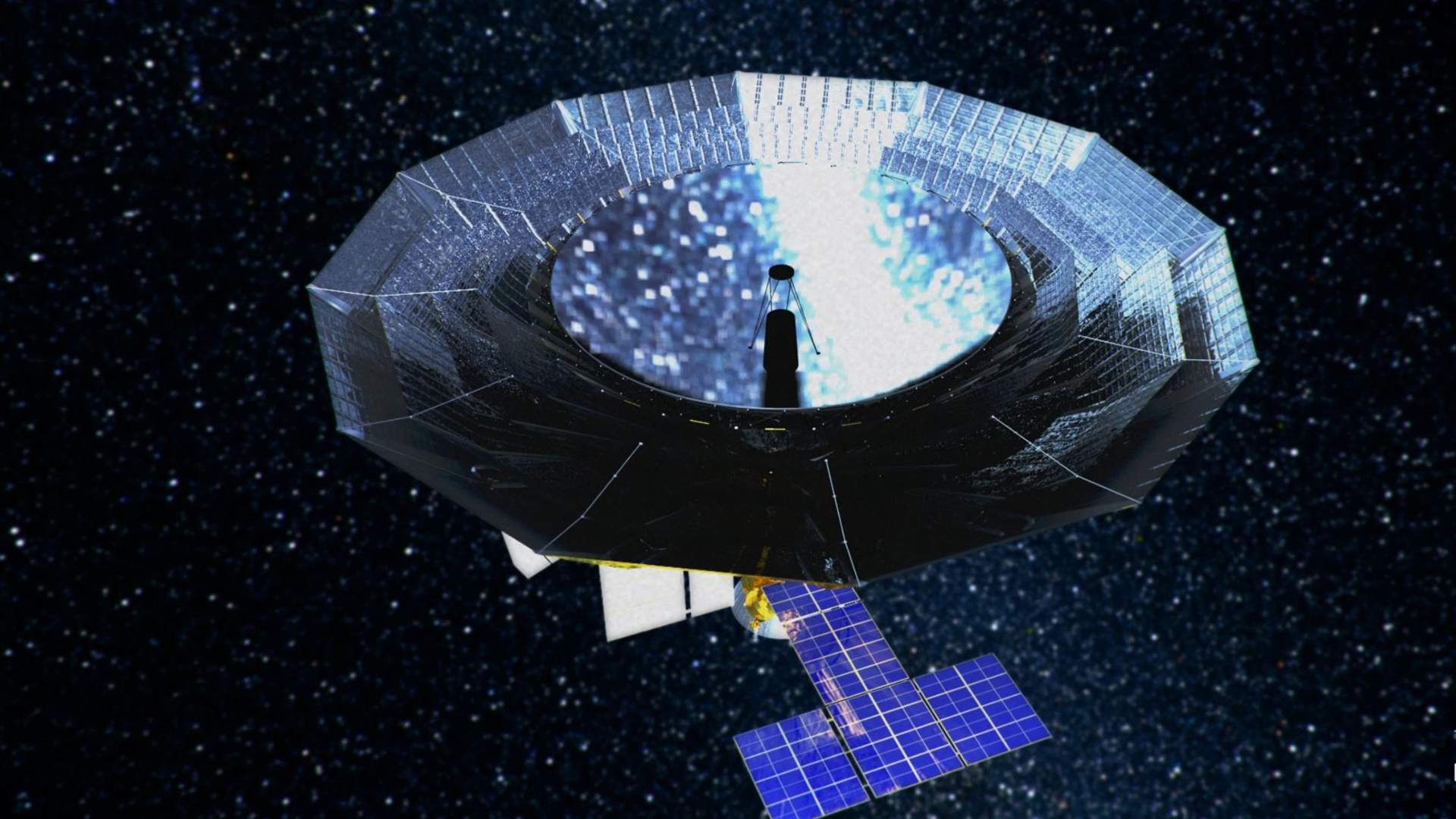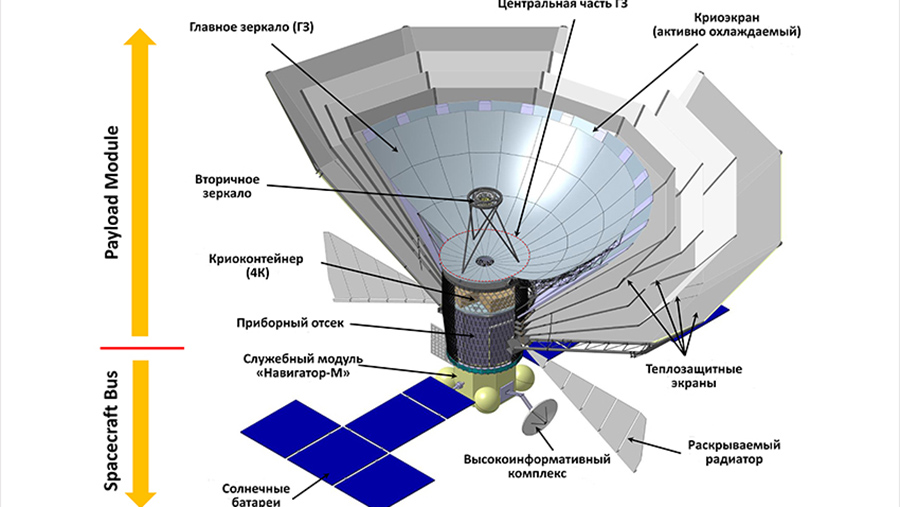- Статьи
- Science and technology
- Extraterrestrial attraction: space observatory will search for life in the universe
Extraterrestrial attraction: space observatory will search for life in the universe

Russian scientists have created ultra-precise detectors for the Millimetron space observatory. With their help, experts will study accumulations of water in the universe. This will help to better understand the evolution of stars, planets, and other celestial objects. The study will be able to indicate the presence of life in certain areas of space. According to scientists, the sensitivity of the devices is close to the quantum limit — the highest possible level. The telescope is expected to be commissioned in 2029. The complex will open a new era in space exploration and is likely to help find intelligent beings, experts say.
What is the Millimetron telescope?
In Russia, devices have been created to search for water in the universe. The new equipment in space will function as part of the Millimetron Observatory (Spektr-M), a 10—meter telescope that will be placed at a distance of 1.5 million km from Earth.

The research complex is being developed by scientists from the P.N. Lebedev Astrocosmic Center for Physics of the Russian Academy of Sciences (ACC FIAN), Moscow Pedagogical State University, the V.A. Kotelnikov Institute of Radio Engineering and Electronics of the Russian Academy of Sciences, the Moscow Institute of Physics and Technology and the Institute of Astronomy of the Russian Academy of Sciences. The telescope is expected to be put into operation in 2029.
— The Millimetron project is a new generation observatory. When built, it will become the world's largest space telescope beyond Earth. The complex will study space in the millimeter and infrared wavelength ranges. Most of the scientific tasks will be directed to the study of the evolution of the Universe, the formation of stars and planets," explained Alexey Rudnitsky, Deputy head of ACC FIAN.
Scientists will also use the observatory to explore active galactic nuclei, black holes, pulsars, and other exotic objects such as wormholes (hypothetical tunnels in space—time) or white holes (supposed physical objects in space that nothing can enter, the opposites of black holes), he added.
Millimetron's special focus will be on studying the origin, migration, and transformation of water in the universe.
— Water is the key to understanding many processes in space. Studying water particles will help us understand how they spread between different objects in the universe and how they got to Earth," explained Elena Zhukova, one of the detector developers and deputy head of the MIPT Terahertz Spectroscopy Laboratory.
In particular, she said, water in the form of ice particles or steam can condense in clouds of gas and dust in which stars form, or in protoplanetary disks. It can also be found in asteroids, comets, and the atmosphere of planets. And since terrestrial life forms are based on water, tracking its concentrations in the universe suggests where it makes sense to look for living beings.
How quantum devices work
As the scientists explained, water in space will be studied using a high-resolution spectrometer. This is one of the main scientific complexes on board the Millimetron. To accurately determine the spectral lines of H2O, seven sub-bands of the terahertz frequency range are allocated in the device.
— To register signals up to 1.3 THz, we used detectors, which are a "layer" of superconductors and an insulator between them. Electrons pass through the insulating barrier due to the quantum tunneling effect (in which microobjects exhibit the properties of particles and waves at once. — Izvestia), — said Andrey Khudchenko, head of the Laboratory of Terahertz Devices and Technologies at the ACC FIAN.
According to him, this structure is so sensitive that every photon that comes from even weak cosmic sources causes a current of individual electrons. At the same time, there are no spurious effects and the detector's own noise is minimized to the so-called quantum limit of measurement accuracy.
According to the researcher, the thickness of the superconductor layers in the detector is several microns, and the insulator is only 1 mk. To capture a signal from the sky with record sensitivity, you need it all focused on this micron-sized transition.
In the range above 1.3 THz, another device is used. It works by heating a 3.5–4 nm thick superconductor film.
— This film is made of niobium nitride. It is so thin—almost two—dimensional-that it heats up at the slightest signal. In other words, when even a weak pulse from space hits it, it absorbs its energy. This leads to a change in the resistance of the film material, which can be detected. Such detectors also have extremely low noise levels," said Ivan Tretyakov, senior researcher at the Laboratory of Terahertz Devices and Technologies at the ACC FIAN.
How water will help to find intelligent creatures
"Millimetron" will open a new era in the study of the universe, says Vladimir Reshetov, professor at the Institute of Laser and Plasma Technologies at the National Research Nuclear University MEPhI.
— There are tasks for which 1.5 million km away from the Earth is a crucial factor. Thus, the launch of the James Webb infrared telescope allowed us to look back to the time when galaxies were just emerging and see planets near the nearest stars. The Millimetron project is another step towards understanding the structure of the world and solving the mystery of the appearance of life on Earth," the scientist explained.
In addition to high—precision spectroscopy, he noted, the uniqueness of the Russian observatory lies in the construction, together with installations on Earth, of a giant interferometer, a virtual radio telescope with a "lens" of 1.5 million km.
Radio astronomy with such a large database will allow us to observe the finest structure of remote space objects and, perhaps, help to detect traces of the activity of intelligent beings, the scientist expressed hope.
— Water is the second most common molecule in the universe after hydrogen. And studying this substance is important for understanding many fundamental processes," said Alexander Tavrov, Head of the Laboratory of Planetary Astronomy at the Department of Physics of Planets and Small Bodies of the Solar System at the Institute for Space Research of the Russian Academy of Sciences.
He explained that by studying the isotopological composition (the ratio of the varieties of atoms in a molecule), one can understand a lot about the place of origin of water particles and their transformations. For example, there are gas giant planets in the vicinity of the Sun, whose atmosphere has remained since the formation of the star system. At the same time, the inner planets (Mercury, Venus, Earth, Mars) lost their primary atmosphere under the influence of the solar wind. But then a new atmosphere formed on Earth, for which the source of water was, firstly, its separation from internal rocks and, secondly, its delivery via asteroids and comets.
So, asteroids during the late heavy bombardment about 4 billion years ago could provide up to 50% of the water reserves on our planet, some experts believe. However, exact answers to these questions have yet to be received. Perhaps the Millimetron will play a significant role in this process, the scientist concluded.
Переведено сервисом «Яндекс Переводчик»









